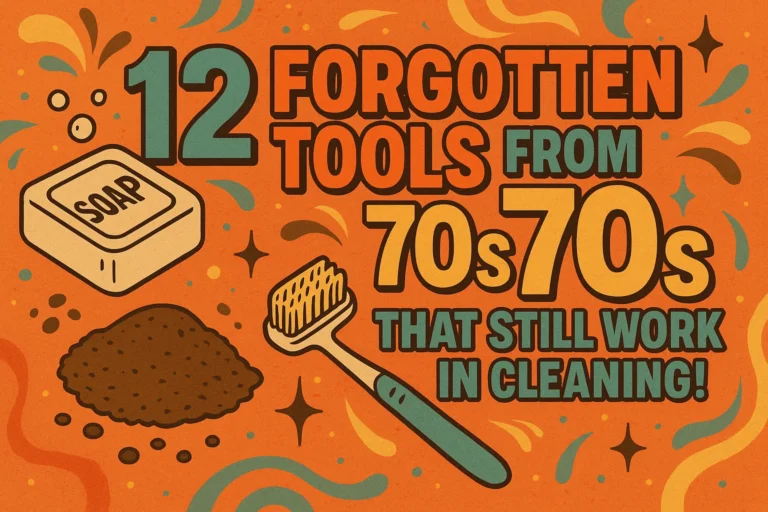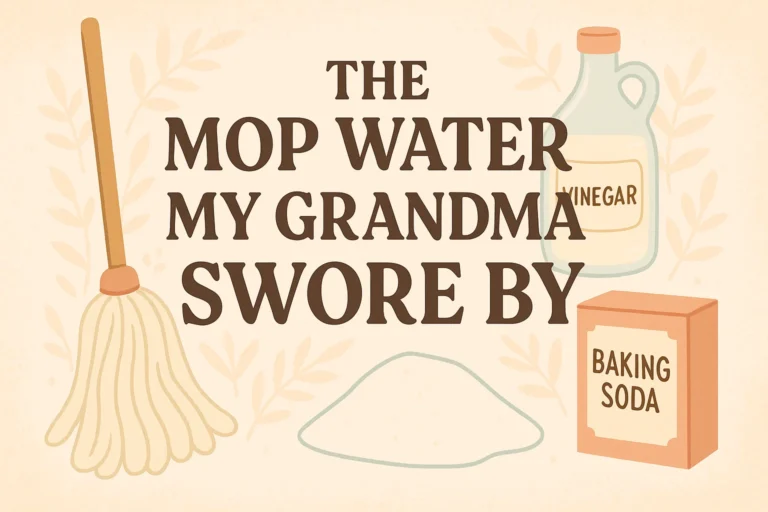15 Laundry Mistakes to Avoid Essential Cleaning Schedule Hacks You Need to Know
Ah, laundry. That never-ending chore that somehow manages to turn your favorite black shirt pink and shrink your jeans into capris for a toddler. We’ve all been there, staring into the abyss of the washing machine, wondering where we went so wrong.
I’ve had my own laundry disasters. Let’s just say I once “felted” a brand-new wool sweater into a garment that could only fit a very stylish chihuahua. It was a heartbreaking lesson that sent me on a mission to figure this whole cleaning thing out. After years of trial, error, and a few more shrunken casualties, I’ve learned a thing or fifteen.
So, grab your detergent, and let’s chat about the most common laundry mistakes and how you can avoid them. Your clothes will thank you, I promise.
Overstuffing the Machine
We get it. That hamper is overflowing, and you just want to get it all done in one go. But shoving your machine to the brim like you’re packing for a three-month vacation is a recipe for disaster.
- Clothes Can’t Get Clean: There’s no room for them to move around! The water and detergent can’t circulate properly, so you’ll likely pull out a load that’s still dingy and maybe even still soapy. Ew.
- It Causes Wear and Tear: All that fabric rubbing against itself in a tight space causes more friction, which leads to pilling, fading, and general fabric fatigue.
- It’s Hard on Your Machine: Your washer’s motor has to work overtime to spin that unbalanced, overstuffed drum, which can lead to premature repairs.
The fix? Stick your hand in the drum. If you can’t comfortably fit it between the clothes and the drum wall, you’ve gone too far. Leave room for the clothes to swish and swirl.
Ignoring Care Labels
That little tag isn’t just there for decoration or to itch the back of your neck. It’s the manufacturer’s cheat sheet for keeping that garment in perfect shape. I used to think I could eyeball it. My formerly “dry clean only” blazer now begs to differ.
Always check the label. Those symbols might look like hieroglyphics, but a quick Google search can decode them. Is it hand-wash only? Does it need to be laid flat to dry? This is the most basic, yet most ignored, step to laundry success. Taking 10 seconds to read the tag can save you from a major laundry meltdown.
Using Too Much Detergent
More soap = cleaner clothes, right? Wrong. This is one of the biggest myths in the laundry universe. Using too much detergent doesn’t make your clothes cleaner; it makes them soapy and gross.
Excess suds can trap dirt and grime back into the fabric fibers. Instead of washing it away, you’re basically gluing it to your clothes. It can also lead to that funky mildew smell in your machine because the residue builds up in hidden spots.
Follow the dosing instructions on the bottle! And remember, those caps are often way bigger than you need. IMO, using a little less than recommended is usually a safe bet, especially if you have soft water.
Not Sorting Properly (Beyond Colors)
Okay, most of us know to separate whites from darks. But are you stopping there? True laundry pros sort by fabric weight and type, too.
- Heavy Items (like towels and jeans) can be rough on delicate items (like lingerie and thin tops). Washing them together can cause snags and pulls.
- Lint Producers (like towels and fleece) should be washed separately from Lint Magnets (like corduroy and dark sweaters). Unless you want to wear a coat of fluffy white lint, that is.
A little extra sorting time saves you from a world of frustration later.
Zippers and Hooks Gone Wild
Ever pulled a sweater out of the wash with a mysterious new pull or snag? You can probably blame an unsecured bra hook or a loose zipper. These metal bits are like little ninjas, attacking everything in their path during the wash cycle.
Always zip up your zippers and fasten your hooks before tossing items in the wash. Better yet, turn these items inside out or pop them in a mesh laundry bag for an extra layer of protection. It’s a tiny step that makes a huge difference.
The Dreaded Fabric Softener Misstep
Fabric softener seems like a good idea—it makes things soft and smell nice! But it’s not always your friend. It works by coating your fabrics in a thin, waxy film. Over time, this can:
- Reduce the absorbency of your towels (making them less effective).
- Gunk up your washing machine’s inner workings.
- Irritate sensitive skin.
For most loads, skip the liquid softener entirely. Instead, try using wool dryer balls. They naturally soften clothes, reduce static, and cut down drying time. Plus, you can add a drop of essential oil to them for a light, chemical-free scent.
Treating Stains Incorrectly
The number one rule of stain removal? Act fast. The longer a stain sets, the harder it is to remove. The number two rule? Don’t just throw it in the wash and hope for the best.
- Rubbing a stain just pushes it deeper into the fibers. Always blot.
- Using hot water on protein-based stains (like blood or egg) will actually cook the stain onto the fabric, making it permanent. Always use cold water for these.
- Check your stain treatment. Different stains require different solutions. Grease needs a different approach than grass or wine.
Do a quick search for the specific stain type before you treat it. A little research can save a favorite piece of clothing.
Overlooking the Lint Filter
This one is for the dryer. That lint filter isn’t a suggestion; it’s a necessity. A clogged lint filter makes your dryer work much harder, drastically increasing your energy bill and drying time. Worse yet, it’s a serious fire hazard.
Clean the lint filter after every single load. No exceptions. And every few months, give it a deep clean with soap and water to remove any invisible film from dryer sheets.
Forgetting to Empty Pockets
We’ve all heard the horror stories—or lived them. A single forgotten pen, a pack of gum, or a tube of lipstick can wreak havoc on an entire load of laundry.
Make it a habit to do a quick pocket check before anything goes into the hamper. It takes two seconds and can save you hours of scrubbing and regret. Trust me, scraping melted crayon off your entire wardrobe is not a fun way to spend a Sunday :/.
Washing Everything in Hot Water
Our grandparents washed everything in hot water, so we should too, right? Not necessarily. Modern detergents are designed to work brilliantly in cold water for most loads.
Washing in cold water saves energy, lowers your utility bill, and is much gentler on your clothes, preventing fading and shrinking. Reserve hot water for seriously soiled items like kitchen towels or bedding when someone is sick.
Never Cleaning Your Washing Machine
Wait, you have to clean the thing that cleans? I know, it sounds meta. But your washing machine can get dirty, moldy, and smelly from all the soap scum, mineral deposits, and grime it deals with.
Run an empty hot cycle with a washing machine cleaner or a cup of white vinegar once a month. Leave the door and detergent drawer open between washes to let it air out and dry completely. This prevents that musty odor from transferring to your clean clothes.
Drying Everything on High Heat
High heat is the arch-nemesis of your clothing. It’s the primary cause of shrinkage, fading, and damage to elastic. That high-heat setting is for things like towels and sheets, not your favorite t-shirts or yoga pants.
When in doubt, dry on low heat. Or even better, embrace the air-dry life for your delicates and activewear. I hang-dry most of my clothes, and they look new for years longer than they used to.
Using Bleach as a Go-To
Bleach is a powerful chemical that should be a last resort, not a standard part of your routine. It weakens fabric fibers over time and can cause yellowing on white synthetics.
Try oxygen-based bleach (like OxiClean) instead. It’s much gentler, color-safe, and fantastic at brightening whites and removing stains without the harshness of chlorine bleach.
Not Turning Clothes Inside Out
Want to keep your graphic tees from cracking and your dark jeans from fading? Turn them inside out before washing. This simple flip protects the outer surface from the abrasive action of the wash cycle, keeping prints vibrant and colors deep.
Letting Wet Clothes Sit
Life gets busy. Sometimes you transfer the load to the dryer and get distracted. Other times, you forget the load in the washer entirely. We’ve all done it.
Letting damp clothes sit in the drum for more than a few hours is a one-way ticket to Mildew City. That damp, musty smell is incredibly hard to remove once it sets in. Set a timer on your phone if you have to! Make moving the laundry along a non-negotiable part of the process.
See? Laundry doesn’t have to be a battle between you and your wardrobe. It’s just about adopting a few smart hacks and breaking some bad habits. You don’t have to implement all of these at once. Maybe just pick one or two to focus on this week.
The goal is to make your clothes last longer, look better, and smell fresh without all the stress. Now, if you’ll excuse me, I have a load waiting. And I promise, this time, I’ve checked all the pockets. 😉







